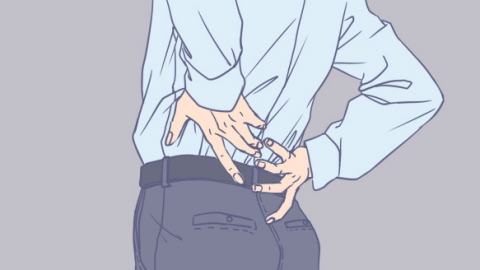How to quickly and effectively treat lower back pain and bone spurs
Generally, lower back pain and bone spurs may be caused by long-term poor posture, aging, lumbar osteophyte formation, lumbar disc herniation, or lumbar spinal stenosis. It is recommended to seek medical attention promptly, identify the underlying cause, and then improve symptoms under a doctor's guidance through general management, medication, and other treatments. Specific analyses are as follows:

1. Long-term poor posture: Prolonged bending, sitting for extended periods, or incorrect standing posture can increase stress on the lumbar spine, leading to lower back pain and accelerating bone spur development. Adjust daily postures to avoid slouching; get up and move every 30 minutes when sitting for long periods; use chairs with lumbar support; apply heat therapy to the lower back for 15 minutes before bedtime to relieve muscle tension.
2. Aging: With age, the lumbar vertebrae gradually lose bone density and elasticity, making them prone to bone spurs and lower back pain. Supplement calcium and vitamin D appropriately in daily life, consume more milk, soy products, and leafy greens, and perform gentle back muscle exercises such as "flying swallow" or "five-point support" to enhance lumbar stability.
3. Lumbar osteophyte formation: Bony protrusions form along the edges of the lumbar vertebrae, irritating surrounding tissues and causing lower back pain. Patients should follow medical advice to take medications such as ibuprofen sustained-release capsules, celecoxib capsules, or glucosamine hydrochloride capsules to relieve pain and protect joint health.
4. Lumbar disc herniation: Protrusion of the lumbar intervertebral disc compresses nerves, and combined with bone spurs, worsens lower back pain and may even cause numbness in the lower limbs. During acute episodes, bed rest is required, and medications such as mecobalamin tablets, vitamin B1 tablets, and diclofenac sodium enteric-coated tablets should be taken as prescribed to nourish nerves, reduce inflammation, and relieve pain.
5. Lumbar spinal stenosis: The lumbar spinal canal narrows due to bone spurs or disc herniation, compressing the spinal cord and nerves, resulting in lower back pain accompanied by intermittent claudication. If conservative treatment fails, lumbar decompression surgery may be necessary to enlarge the spinal canal and relieve pressure. Post-surgery rehabilitation training should be conducted under medical supervision to restore lumbar function.
In daily life, avoid lifting heavy objects and engaging in intense physical activity; keep the lower back warm; choose a mattress with moderate firmness. Maintain a light diet, reduce intake of high-salt and high-sugar foods, and undergo regular lumbar check-ups. Comprehensive management can help alleviate lower back pain and stabilize the condition of bone spurs.





